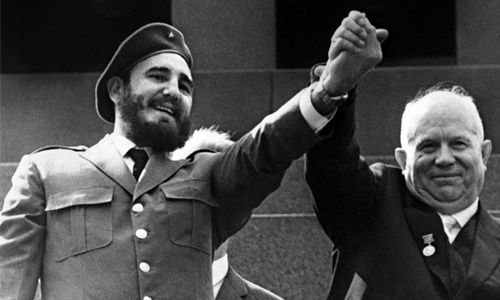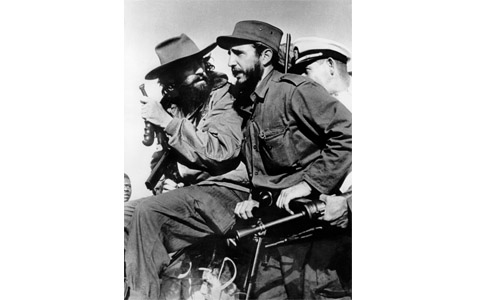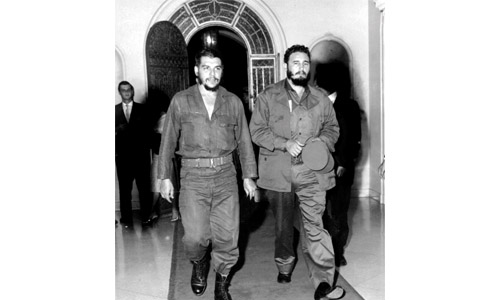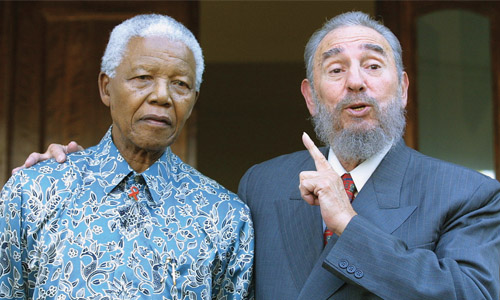Fidel Castro: 90 years in six snapshots
Havana : After surviving more than 600 assassination attempts, defying 10 US presidents and shaping half a century of history, Fidel Castro turns 90 on Saturday.
Here are six snapshots of this magnetic, polarizing giant of the 20th century, who has beaten the odds to hang on well into the 21st.
The survivor
The years have left their mark on the father of the Cuban Revolution, who transferred power to his younger brother Raul 10 years ago.
His long black beard has turned a wispy gray. He has given up his iconic Cohiba cigars. He rarely appears in public.
But Fidel lives on.
No one could have predicted his place in history when he launched his revolutionary career with a botched attack on Cuba’s Moncada military barracks in 1953.
The 26-year-old lawyer was captured and jailed for the failed raid, which ended with dozens of rebels killed or executed by dictator Fulgencio Batista’s forces.
Fast forward six years, and Castro was triumphantly rolling into Havana, having returned from exile to lead a guerrilla army that once numbered just 12 men to defeat Batista and his military of 80,000.
The unlikely victory brought the “red menace” of Communism to the United States’ doorstep at the height of the Cold War.
Alarmed, the US Central Intelligence Agency and Cuban exiles tried to assassinate Castro 634 times, his ex-intelligence chief, Fabian Escalante, has estimated.
Castro once told Spanish journalist Ignacio Ramonet he nearly always carried his Browning pistol just in case.
But he denied reports he wore a bullet-proof vest.
“I have a moral vest. It’s strong. It has always protected me,” he told journalists in 1979, baring his chest to prove the point.
The seducer
“I was so impressed! I could only look at his face and say, ‘I love him,’” says Mercedes Gonzalez, 59, who has only seen Castro twice up close. But she says she felt an overpowering attraction.
With his rugged rebel look and imposing persona, Castro has long fascinated people, and women in particular.
Officially, Castro has been married twice and fathered seven children by three women.
Rumors of secret affairs and more children abound.
But he keeps his private life to himself.
The enemy
Castro defined himself in opposition to the American “empire,” and the resentment lingers to this day.
After Barack Obama sealed the two nations’ historic rapprochement by visiting Cuba in March, Castro told Cubans not to be fooled by the US president’s “syrupy words.”
The underdog
Castro had a penchant for trying to pull off the seemingly impossible.
In 1961, he all but eradicated illiteracy with an ambitious rural education campaign.
When the exodus of Cuban exiles left the country with just 3,000 doctors, he vowed to make the island a “medical superpower.” Today it has 88,000 doctors and one of the most respected health systems in the world. Other projects were less successful.
The icon
Castro was a hero to revolutionary movements and independence struggles worldwide.
He sent 386,000 troops to fight in spots where the Cold War turned hot: Angola, Ethiopia, the Congo, Algeria and Syria. And he backed leftist guerrillas across Latin America.
The military results were mixed. But the symbolism was powerful.
The myth
As Castro gave his speech proclaiming the triumph of the revolution in 1959, a white dove landed on his shoulder. The man had officially become the myth.
In a country where Catholicism blends with African religions, Cubans say Castro is protected by Obatala, the most powerful of the “orisha” divinities.
Some thought him immortal, until a health crisis forced him to give up power in 2006.
Still, he survived.
Last April, however, he seemed to say goodbye.
“Soon I’ll be like all the rest. Everyone’s turn comes,” he said.
This file photo taken on January 8, 1959 shows Cuban rebel leaders Fidel Castro (R) and Camilo Cienfuegos(L) entering Havana after the victory over the forces of Cuban dictator Fulgencio Batista.
This file photo taken on December 31, 1962 shows Argentine-born legendary revolutionary figure Ernesto “Che” Guevara (L) with Cuban leader Fidel Castro (R) in Havana’s famous “1830” restaurant four years after he and Fidel Castro led the revolution that toppled Cuban dictator Fulgencio Batista.
This file photo taken on September 02, 2001 shows Cuban president Fidel Castro(R) expressing his joy in meeting former South African president Nelson Mandela at Mandela’s office in Johannesburg
Related Posts




